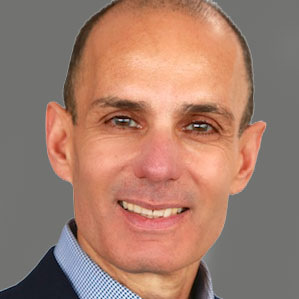Taking responsibility makes the difference
I was working with a large technology company on transforming their organizational culture and elevating their business results to a new level. We started the change initiative with the senior leadership team, getting each of the leaders to whole heartedly believe in, and own the process and its objectives.
We then extended the process to the top 100 senior managers by holding a multi-day session that also included the senior leaders.
Like many companies, there was history and baggage with regard to change. There were past attempts to improve the basic organizational dynamics that everyone was frustrated about, such as transforming the silos, politics and ‘blame game’ between functions and levels into genuine alignment, trust and collaboration, bringing clarity to everyone’s roles and responsibilities, and changing the overall sentiment in the organization that the senior leadership was not ‘walking the talk.’
In that initial session, the managers had the opportunity to express to the senior leaders what they were most frustrated about and what they wanted to see a change in, including in the way the CEO and the senior leaders behaved and operated. The senior team listened openly and together with the managers they committed to improving things.
The managers left the session really excited and hopeful about the future. However, they also left with high expectations of their senior colleagues regarding the continuity and follow through of the process.
The senior leaders were determined to drive changes in culture and business processes and performance. They set up task teams to drive the strategic commitments and they started – slowly but surely – to upgrade and change key employee related policies and processes.
The problem was, however, that the senior leaders did not do a good job communicating down to the managers what they were doing and the progress they were making. The managers who took part in particular activities knew only about those activities, and those who weren’t actively involved had no awareness of any progress. And, even those who saw segments of the progress felt it was too small and too slow.
With no communication and updates, managers became increasingly frustrated, skeptical and discouraged about the change. Negative hallway chatter increased and there was a growing sentiment of criticism and invalidation of the senior leaders and the change initiative for its lack of traction and progress.
Needless to say, even though the CEO and senior leaders felt good about the progress in the change initiative when it came time for the next in-person session with the managers, they were extremely nervous and worried about their ability to re-engage the managers in the next steps of owning and leading the change.
This true story does have a good ending…
The meeting with the managers was very successful because instead of ignoring sentiments and putting on a fancy presentation, the CEO and his senior leaders generated a dialogue that was very honest, authentic and courageous in which they referred back to the initial meeting and acknowledged what they had committed to at the time. They also shared what had progressed since the beginning, and also what hadn’t. They recognized the managers for the progress and took responsibility for what hadn’t progressed, including the lack of communication and update along the way. They also, committed to specific areas to tackle next in order to accelerate the change.
Not only did the CEO and senior leaders take responsibility, but they did it in a genuinely open, vulnerable and courageous way. This touched the managers and enabled them to get beyond the past, quickly and regain their faith, commitment, and ownership in the future of the change.
From the several lessons I took from this powerful, inspiring and transformational event, I want to highlight two:
First, it was another reminder of just how powerful and magical open, honest and courageous communication and dialogue can be.
Second, that no matter how challenging or frustrating things may be, when leaders take responsibility for what they said and committed to, what they have done and what they hadn’t, in a genuine and courageous way, this transforms almost any level of skepticism and doubt below them.
In fact, if I had to capture the blueprint of the conversation that makes the difference it would look like this:
- Acknowledge what you committed to in the first place, including what people may have expected out of what you said.
- Share what you have done, achieved and accomplished and where there have been small, medium or large progress.
- Acknowledge what you have not done, and do it without excuses, justifications or stories.
- Commit to what you will do moving forward in order to continue to drive the commitments you promised in the first place.
- Invite you managers or team members to join you and co-own the game moving forward – But, DO NOT start the process with step 5, because without taking responsibility first for past successes and failures you don’t have a high chance to succeed.
- Keep your commitments. Learn from the past, correct errors and improve your process.
People will forgive you once or twice. In fact, they will trust you even more if you demonstrate learning from history, especially your mistakes and failures. However, if you don’t, you will lose the trust and your credibility and it will be extremely difficult to recover from that.





Leave a Reply
Want to join the discussion?Feel free to contribute!